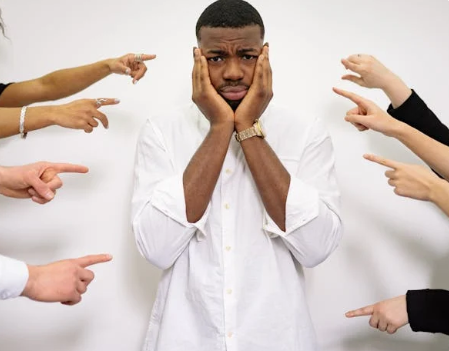
There’s a strange contradiction most of us live with every day.
We want more time, but fill our calendars until they bleed into each other. We crave peace, but reach for our phones the second we feel a lull. We say we’re exhausted, but treat rest like it’s a reward we haven’t earned yet.
In a world built for speed — fast Wi-Fi, fast fashion, fast opinions — living slowly can feel like swimming upstream. But for more and more people, the choice to slow down isn’t just a luxury; it’s becoming a necessity.
Slow living isn’t about doing nothing. It’s about doing what matters — with intention, with presence, and with care. If you’ve been feeling burnt out, distracted, or disconnected from your own life, it might be time to take a breath and begin again.
Here’s what slow living actually means — and how you can begin, one small step at a time.
What Is Slow Living?
Slow living doesn’t mean dropping out of society, moving to the countryside, and raising chickens (though hey, if that’s your thing, go for it).
At its core, slow living is about doing fewer things, more deeply. It’s about aligning how you spend your time with what you actually value — not just what the world expects of you.
That might look like:
- Cooking instead of ordering out (sometimes).
- Taking a walk without a podcast in your ears.
- Saying no to things that drain you — even if they sound “important.”
- Leaving space in your day, on purpose.
It’s a mindset more than a lifestyle. One that invites reflection instead of reaction.

Why So Many Are Turning to Slow Living
You don’t need a stat sheet to know that burnout is high, attention spans are short, and most of us are juggling more than we’re built for. But still — why now?
Because the speed of everything has reached a tipping point.
We scroll through news, entertainment, and social validation in a single swipe. Work has followed us into our homes. Even hobbies have become content.
At some point, people start asking: what’s all this speed for, anyway?
Slow living is a quiet rebellion against the idea that more, faster, and louder is always better. It’s not about escaping life — it’s about returning to it.
How to Begin: Practical Tips for Living Slower
You don’t need to change your whole life overnight. You just need to change how you show up in small moments. Here are some ways to begin.
1. Start Your Mornings Without a Screen
Before you reach for your phone, try giving yourself 10–20 minutes of quiet.
Make coffee. Sit in the sun. Journal. Stretch. Or just stare out the window.
This tiny shift can change the tone of your whole day. You begin grounded, not reactive.
2. Do One Thing at a Time
Multitasking might look efficient, but it usually splits your attention and leaves you drained.
Try washing the dishes without checking your phone. Eating without a screen. Walking without rushing.
Monotasking — yes, it’s a real term — is underrated.
3. Schedule White Space
If your calendar looks like a Tetris board, try this: block out an hour a day (or even just a few each week) where nothing is planned.
No calls. No errands. No tasks.
This isn’t wasted time. It’s recovery time — for your brain, your body, and your creativity.
4. Rethink Productivity
Slow living doesn’t mean being lazy. But it does ask you to define “productive” on your own terms.
Some days, a productive day might be ticking off tasks. Other days, it might be resting, reading, or calling a friend.
The question to ask isn’t “What did I get done?” but “Did I live today in a way that feels right to me?”
5. Simplify One Area of Your Life
Don’t try to declutter your entire house, change your job, and reset your diet in one week. Start small.
Pick one space to simplify. Your email inbox. Your wardrobe. Your Sunday afternoons.
Clarity builds from consistency, not chaos.
6. Reconnect with Your Senses
So much of modern life happens in our heads — on screens, in thought, in judgment.
Slow living brings you back to the body. It might be:
- Taking a barefoot walk in the grass.
- Cooking something from scratch.
- Listening to music with your eyes closed.
Notice texture, taste, scent, temperature. These are the places where presence lives.
7. Protect Your Attention Like It’s Currency
Because it is.
In a fast world, your attention is constantly pulled, pinged, and packaged. Slow living means guarding it — not for silence, but for presence.
Turn off notifications. Leave group chats. Delete apps that feel more addictive than enjoyable.
You’re not missing out. You’re opting in.
Letting Go of the Guilt
Here’s the tricky part: slowing down will feel wrong at first.
You’ll feel lazy for not checking your email at night. You’ll feel restless in silence. You’ll wonder if you’re falling behind.
This is normal.
Slowing down isn’t natural in a culture that equates being busy with being important. But keep going. The discomfort fades. The clarity grows.
You’ll start to notice what your life actually feels like — not just what it looks like on paper.

What You Gain When You Slow Down
It’s not just about having a peaceful day. The benefits of slow living ripple out in ways you might not expect.
- Deeper relationships (you’re more present in conversations).
- More creativity (your mind finally has room to wander).
- Better health (stress doesn’t rule your nervous system).
- Richer experiences (you actually feel your life, not just live through it).
Slow living doesn’t mean life stops. It just means you start living it on your terms.
Final Thought: It’s Not About Going Back — It’s About Going Deeper
You don’t need to live in the countryside or throw away your smartphone to live more slowly.
You just need to pause. To ask yourself:
- “Why am I rushing?”
- “Is this pace working for me?”
- “What would feel right today — not just productive?”
The world will keep spinning. Deadlines will come. But somewhere in all of that noise, you can still choose a slower rhythm.
One that lets you breathe.
One that lets you feel.
One that lets you be — not just do.



